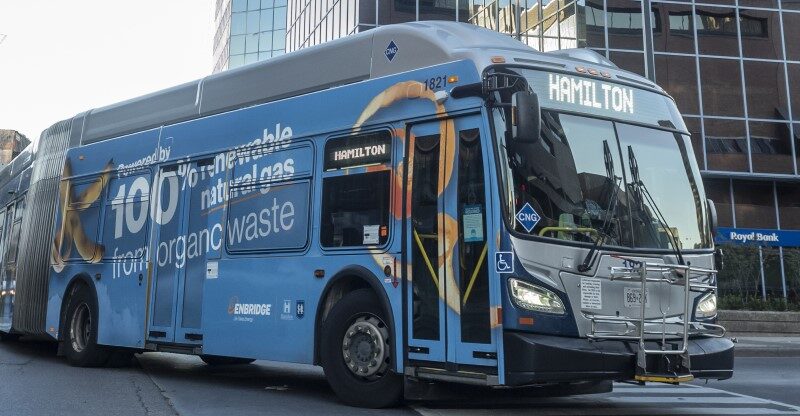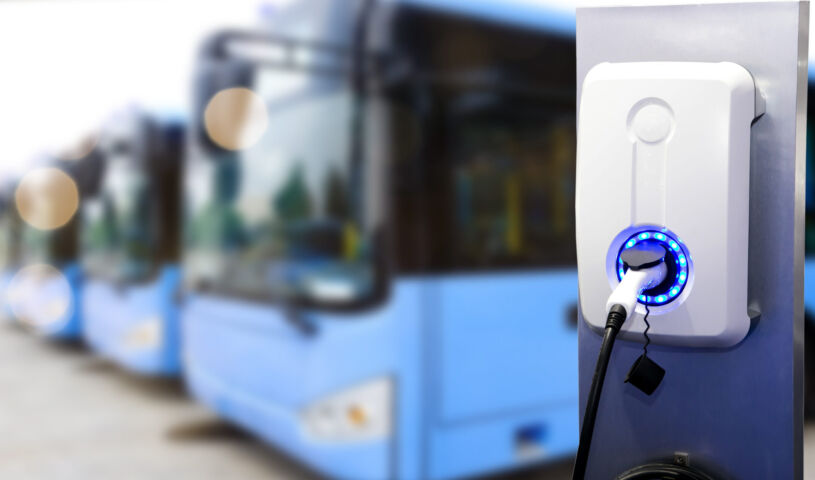Sustainable, responsible, available net-zero transportation now

How municipalities can quickly and cost-effectively decarbonize fleets
Sponsored by Enbridge Gas
Transportation is the largest contributor to Ontario’s greenhouse gas (GHG) emissions, according to Government of Canada statistics. Because of this, cities are implementing creative solutions to reduce emissions from municipal transit and other heavy- and medium-duty fleets.
Improve Energy Efficiency
Conservation is currently the most cost-effective tool available to decarbonize existing fleets and ensure energy system resilience. A review of vehicle data telematics can help divisions better understand fleet utilization. Data on hours driven, idle time, fuel usage, replacement cycles, and more can uncover options for rightsizing and downsizing.
“All that data helps us to review our targets and reduction of emissions,” said John Hrynisak, Fleet Superintendent, Durham Region. “It also helps us with procurement, to choose the right vehicle for the right job.”
Transition to Lower-Carbon Fuel Sources
Electrification can work well for light-duty vehicles on shorter routes, but it’s not a one-size-fits-all solution. Heavy transport on longer routes, including transit buses, waste-collection trucks, concrete trucks, street sweepers, and snowplows, are all excellent candidates for alternative fuels such as:
- compressed natural gas;
- renewable natural gas; and
- hydrogen.
In southwestern Ontario, Bluewater Recycling Association and Ontario Waste Management Association, which serve 22 municipalities, switched from diesel to cleaner compressed natural gas (CNG) and renewable natural gas (RNG) to reduce fuel costs and lower emissions.
“In 2014, we made the decision to switch to compressed natural gas to power our fleet. We invested about $750,000 to build a CNG fuelling station and $200,000 to modify our vehicle maintenance facility,” says Francis Veilleux, President, Bluewater Recycling Association. “Today, our fuel costs are about 41 cents per litre, so it allows us to be very competitive and offer vehicles that are cleaner and quieter while reducing carbon emissions.”
The City of Hamilton and Hamilton Street Railway (HSR) have been gradually replacing their fleet of diesel buses with CNG vehicles. This transition has cut GHG emissions by some 20 percent. In 2021, they introduced RNG to fuel their natural gas buses, becoming the first public transit authority in Ontario to use a certified 100 percent carbon-negative fuel to transport customers.
The RNG is supplied by Enbridge Gas and is created in the City of London at the StormFisher biogas facility that processes organic waste. In one year, HSR’s RNG bus will divert 450 tonnes of organic waste from landfill, enough to fill 38 waste-collection trucks.
New Zero-Emission Fuel
In 2022, Enbridge Gas became the first utility in North America to blend hydrogen – a zero-emission fuel – at scale with natural gas. This blended gas was created by injecting Ontario’s natural gas pipelines with hydrogen. It further expands the opportunity to use hydrogen to decarbonize building heat, transportation, and industry.
What about municipalities that don’t yet have a fleet sustainability plan? Open a conversation with alternative fuel experts. “You’ve got to start the talk first,” Veilleux advises.
To learn more, visit enbridgegas.com/cng. MW
✯ Municipal World Executive and Essentials Plus Members: You might also be interested in Ehren Cory’s article: Tackling the “all at once” challenge.
Joey Cyples is a business development specialist at Enbridge Gas, helping municipalities and private companies transition fleets to lower-carbon fuels.
Related resource materials:



